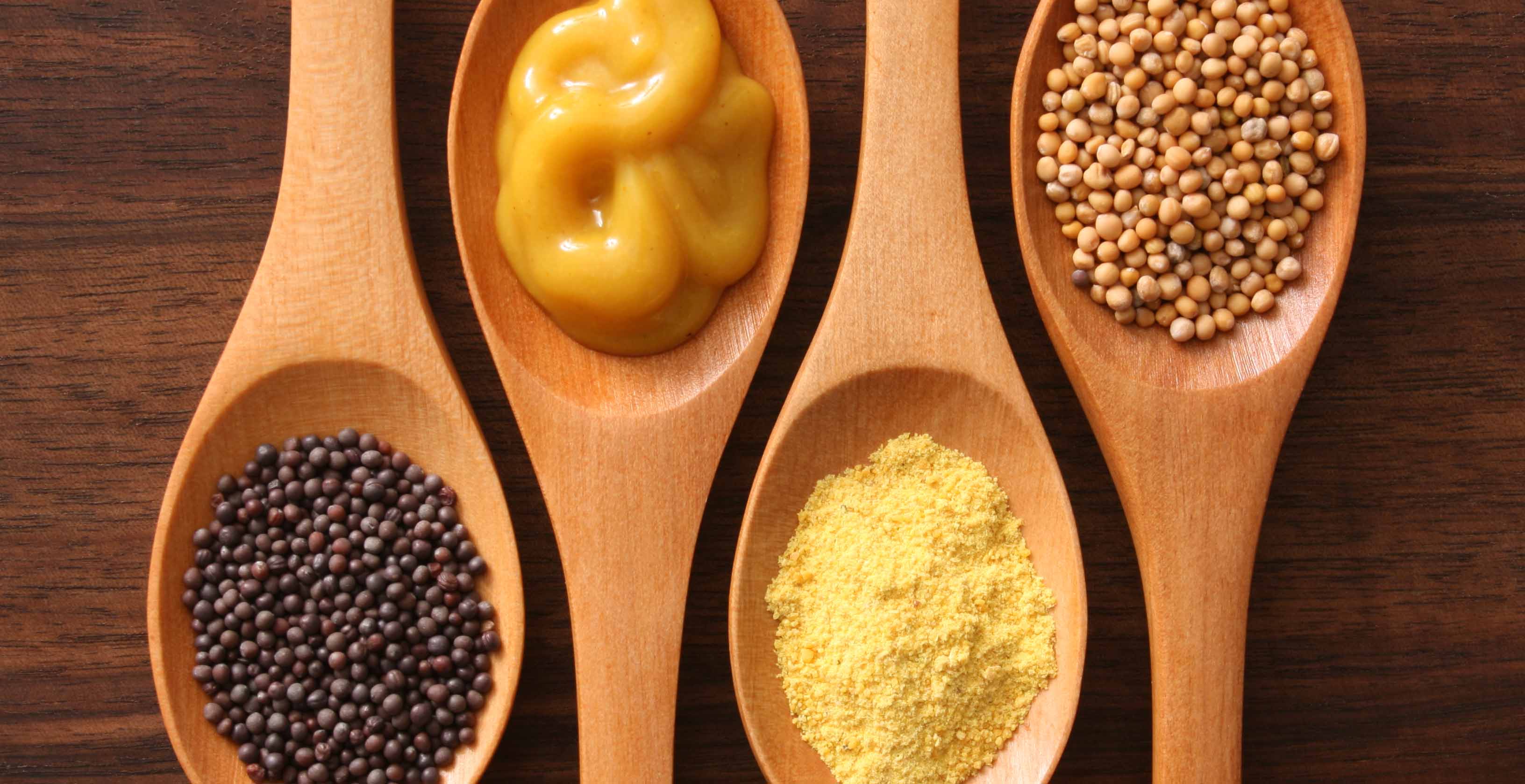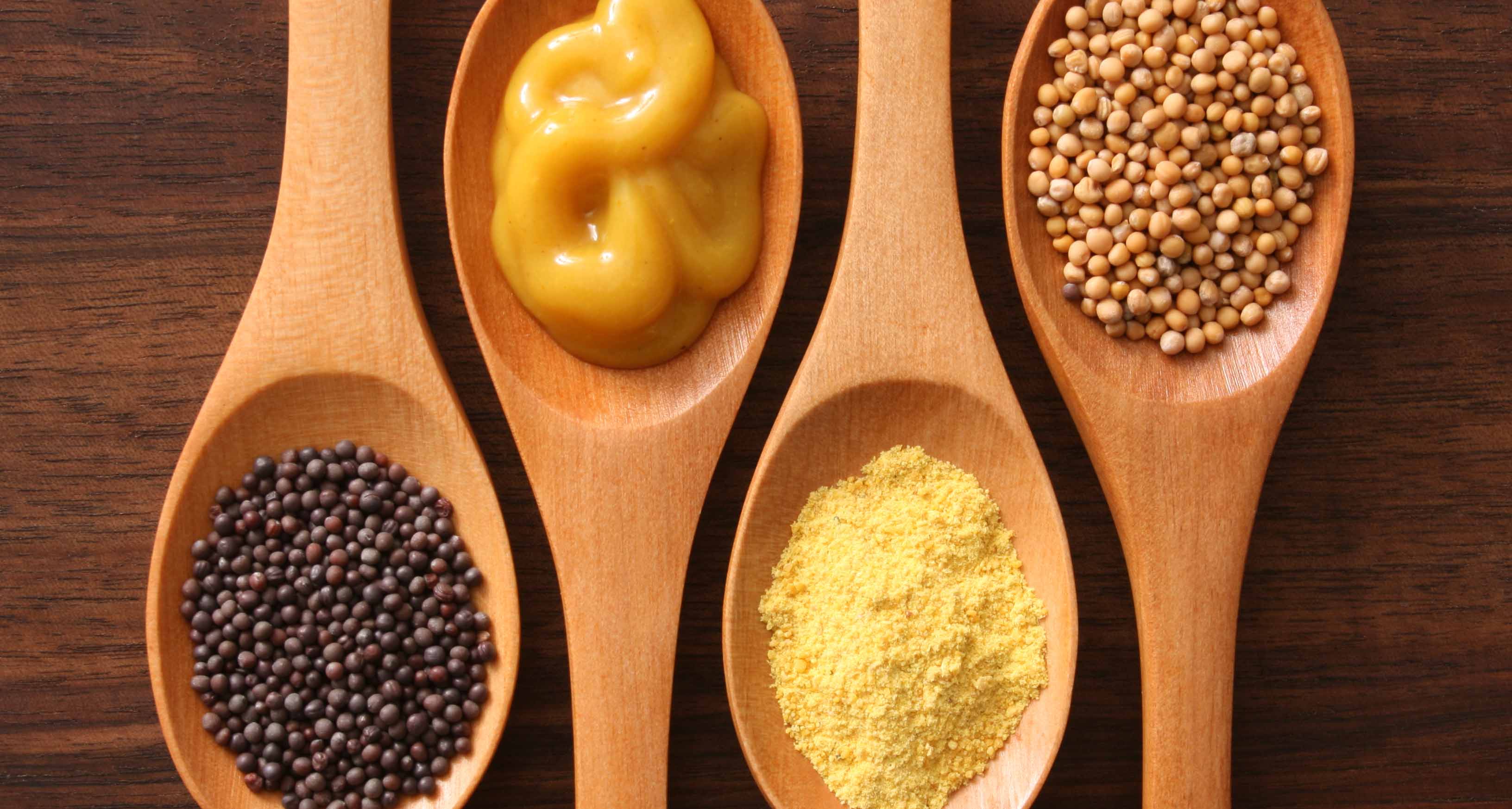Mustard 101


Made from the seeds of mustard plants, mustard is manufactured and enjoyed by people all over the world. The main ingredients in mustard are mustard seeds, lemon juice or wine (or other acidic liquids), salt, and flavourings or spices. Mustard seeds can be left whole, as with grainy mustard, or they can be ground up to produce a smooth mustard.
Did you know that between 70 and 80 per cent of all mustard seeds are grown are harvested in Canada? In many cases mustard seeds are sold to production companies in Europe and then sold back to Canadians at a premium. It’s very difficult to find mustard that has been made in Canada, but if you’re fortunate to find some make sure you give it a try!
Dijon mustard
Dijon mustard gets its name from the small town of Dijon, in Burgundy, France (a region which is also popular because of its wine-making industry). Dijon mustard’s main ingredients are ground up brown mustard seeds and white wine, although black mustard seeds are sometimes used as well. Dijon mustard is fairly spicy, different brands tend to have varying levels of heat. Dijon mustard can be used as a condiment or added to marinades and salad dressings.
Dijon mustard is not to be confused with “Mustard of Burgundy” which is made in the same region but has Protected Geographical Indication designation. This designation means that the ingredients in the mustard must be sourced from Burgundy and that traditional mustard production methods must be used.
Honey mustard
Honey mustard is simply mustard that has been mixed with honey. Add honey mustard to your sandwich (it’s especially good in ham and cheese sandwiches), or use it to glaze pork loin or pork chops.
Yellow mustard
Yellow mustard is a North American invention and is significantly milder than other mustards. With its unmistakable bright yellow colour and tangy taste, yellow mustard is a good option if you don’t like the heat of Dijon mustard. A classic pairing for hot dogs and hamburgers, yellow mustard is also a common ingredient in potato salads and barbecue sauces.
English mustard
Somewhat of a specialty item in Canada, English mustards are some of the hottest mustards available. Much closer in colour to yellow mustard than Dijon, English mustard pairs well with strong cheeses, charcuterie, sausages and pickles.
Flavoured mustard
Mustards come in a huge variety of flavours, many of which can be found in delis and specialty food shops. Types of flavoured mustards include but aren’t limited to tarragon, parsley, wasabi, basil, black or green peppercorn, cassis and balsamic vinegar.
Next time you’re making potato salad try adding grainy mustard to the dressing. You’ll find it’s just as at home in a yogurt-based salad dressing as it in a German-style vinaigrette. For a complete meal add your favourite protein; pork, turkey and duck are all especially complementary to the taste of grainy mustard.
Combine Dijon mustard with the acid of your choice (red or white wine vinegar, citrus juice) and use as a Provençal-style marinade for chicken, fish and pork. Experiment with different types of flavoured Dijon mustard, tarragon and basil work particularly well. This marinade can also be used as a vinaigrette for green salads.
Make a quick dipping sauce by combining equal parts honey mustard and nonfat plain yogurt and a drizzle of hot sauce. Use this tasty sauce for veggies, soft pretzels and breaded chicken tenders.
Use Dijon or grainy mustard in a creamy herb dressing by combining a tablespoon of mustard with ¼ cup of nonfat plain yogurt, a tablespoon of mayonnaise, the juice of half a lemon, kosher salt, freshly cracked pepper and a handful of finely chopped fresh herbs (parsley, dill and basil all work well). Use this dressing on green or chopped salads, it will keep in the fridge for up to three days.
